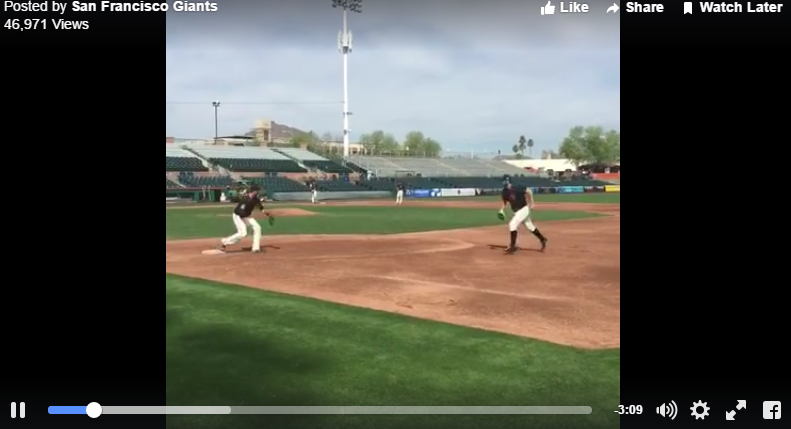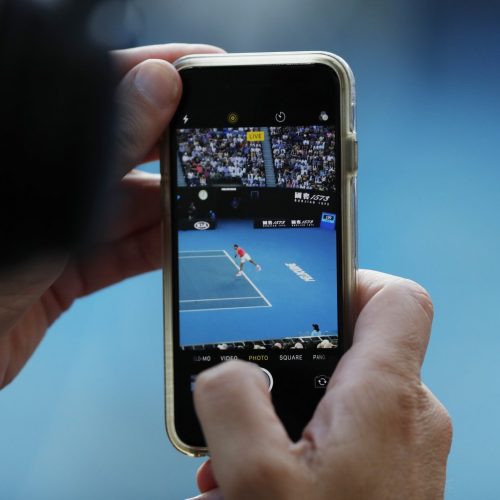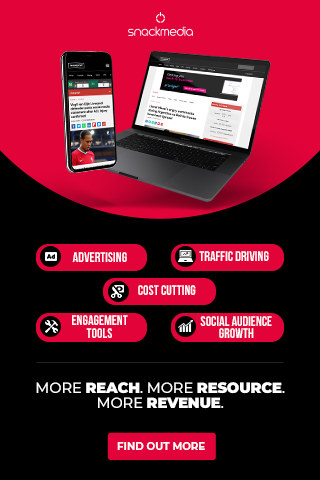Facebook’s live streaming service can change the broadcasting game
If the lines between rights of the broadcasters, sporting organizations, sports federations and digital platforms weren’t already blurred, the widespread arrival of Facebook’s live streaming service will have definitely done the job.
In a move that has the potential to entirely transcend the television rights paradigm, Facebook has landed in not only one of the most in-demand niches of the past 12 months but one of the most hotly contested. And as brands strive to find better and wider-reaching ways of interaction, this streaming service may signal yet another seismic shift to more flexible and dynamic media platforms.
Snapchat and Twitter
The platforms that will be kicking themselves at Facebook’s arrival into live-streaming is both Snapchat and Twitter who have built strong audiences through being the ‘go-to platforms‘ for fans when they watch sport.
Until now, Facebook has looked to mirror that functionality and be that companion, particularly in terms of people keeping up with the game and interacting with others watching like with it’s Sports Stadium feature. However, instead of attempting to be that companion and striving to beat Snapchat and Twitter at their own game, Facebook has completely surpassed that game with this service.
In creating a stable and dynamic streaming service, Facebook won’t be the companion that people have on the side to watch sport on television, Facebook will be that platform fans use to watch sport.
To say that Snapchat and Twitter have lost in this instance is a little unfair, especially with Snapchat owning the niche of having users and fans contribute to another users’ experience. But it’s certainly not unfair to suggest that “behind the scenes” experiences seen on both Twitter’s Periscope and Snapchat may be made redundant after Facebook’s latest move because at the end of the day, more people use Facebook.
Broadcasters and other stakeholders
Can you hear that shuffling sound?
That’s the sound of traditional broadcasters, sports teams and administrations behind the door of boardrooms deliberating on the service and deciding how they can play it to their advantage, ensuring that while moving with the times and reaching as many as they can, they’re also afforded a slice of the very lucrative pie.
The likes of YouTube, Meerkat and Periscope made all broadcasters and organisations nervous when they were introduced, however, they’ve all managed to tread the line of offering a lot but not too much. In YouTube’s case, its willingness to preserve its own reputation saw it proactively protect broadcast rights, taking down videos of virtually any length after no more than a few days. As for Meerkat and Twitter’s Periscope, its markets have been far too niche to get them anywhere near mainstream audiences.
But with the most popular social media platforms in the world now virtually allowing people to live stream from wherever they are, whatever they want, for however long they want, stakeholders will be forced to reach even further into the realms of the digital world to offer features to fans that they simply can’t get anywhere else. We’ve already seen the fast-tracked introduction of 4K television as well as the introduction of VR but the “digital race” is now more important than ever.
In preparation for the change, brands have already begun their transition away from traditional media into Facebook. The MLB as well as professional baseball clubs are already live streaming pre-season content. You can call it luck that their pre-season coincides with the widespread introduction of this service but all they have to do is to lift up their phone and press record and they’re already reaching thousands more fans than they were before.
Morning work. #SFGSpring ????
Posted by San Francisco Giants on Thursday, 3 March 2016
Paid service
What we’ve seen from brands that tend to push the boundaries of television rights like YouTube is that whilst they’re cautious of pushing boundaries when it comes to broadcast and television rights, their willingness to push their brand and further their cause as an organisation means they branch out into other areas.
YouTube Red is a significant example of this – a free video service that is now also a paid subscription service for extra features like exclusive TV shows and sports programs. And it wouldn’t be at all surprising if we saw Facebook adopt this kind of strategy. Facebook will want to keep its brand at the very top of the tree and its features the very best in the industry – but if it begins to undercut broadcast rights then it’s reputation will take a downhill slide very quickly.
We’re not sure what a paid Facebook live subscription would look like but what we are sure of is that if talks with brands, broadcasters and organisations haven’t yet started, they’re not far away. Because if brands can use it to show behind the scenes footage with just the touch of a finger, there’s no reason every day fans can’t attend and stream matches – and but for the exception of us sitting at our computers at home, that’s every stakeholders worse nightmare.
About author
You might also like
Mallory Group Launches White Paper on the ‘New Normal’ for Sports Rights Holders
Sport is proving to be one of the high-profile business casualties of the Covid-19 pandemic. However, its slow and structured return will be a key factor in life entering the
The seven essentials for achieving successful sports branding
By Daniela McVicker When it comes to sports, great branding is a must. Your brand influences how people see your company or team. It helps you to forge connections with
Live Chat: A New Social Experience in Sports
Article written by John S. Kim, CEO and co-founder of global API company SendBird Social media rose to prominence throughout the world due to its potential for connection. Social channels provided the









